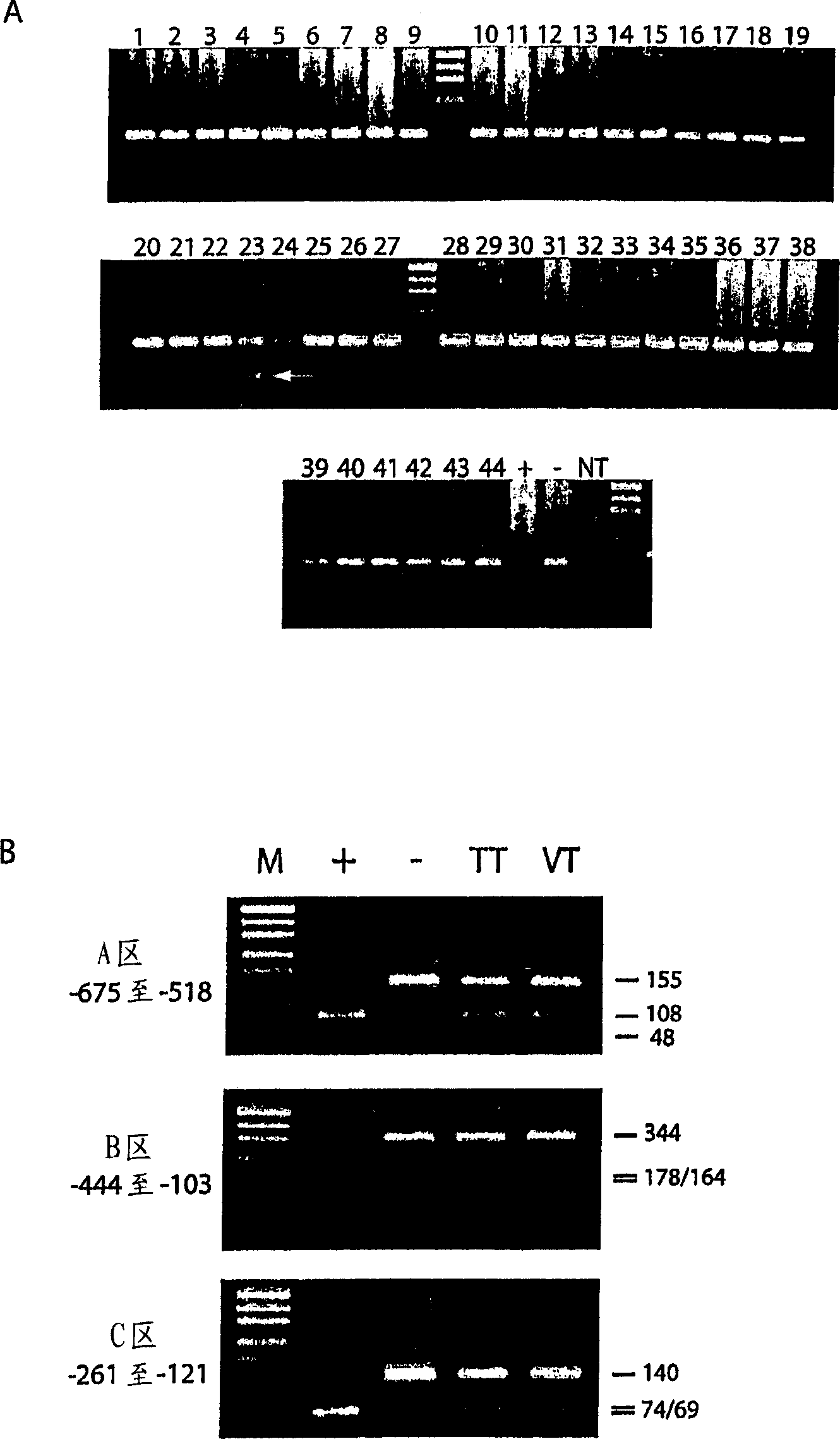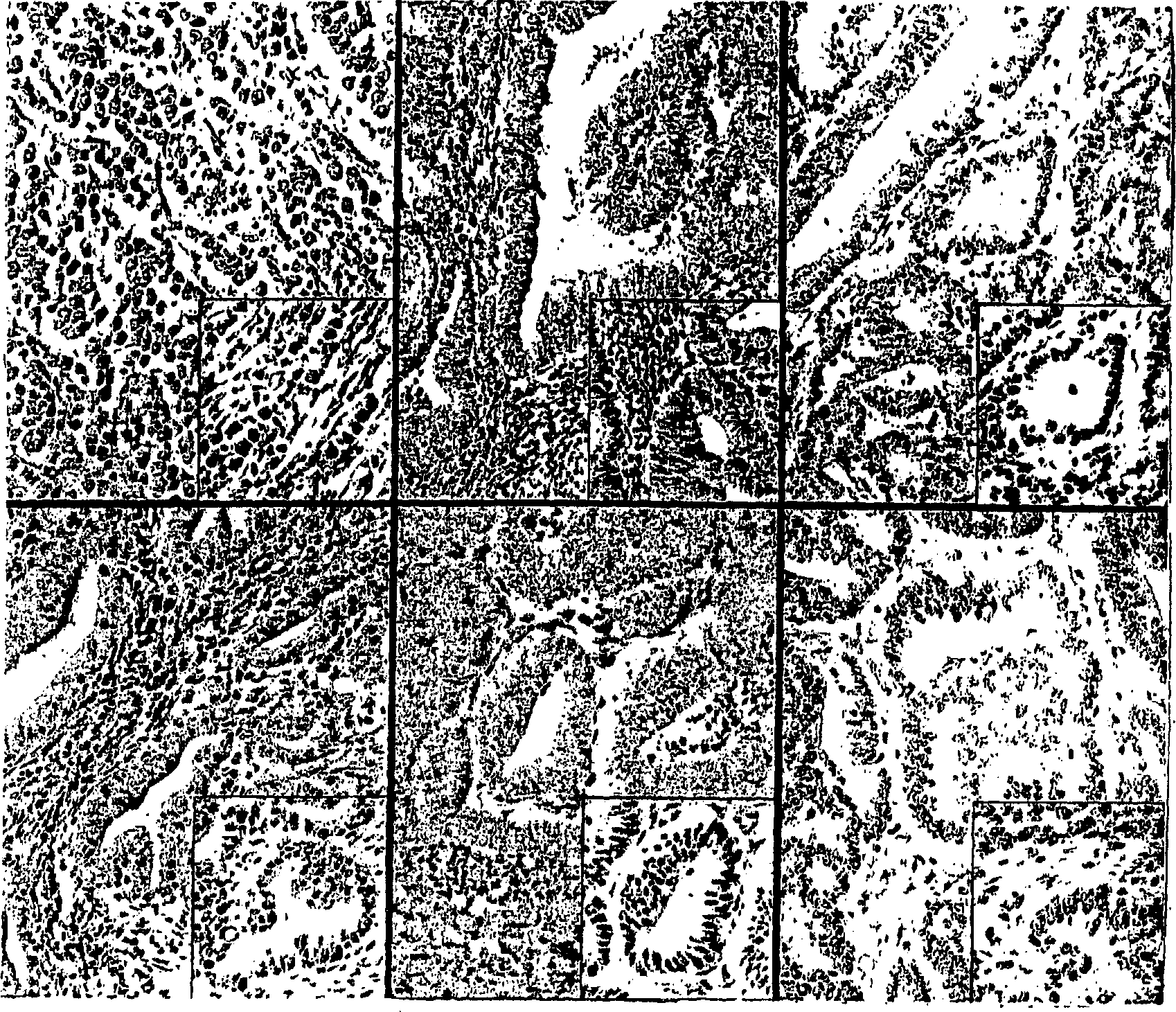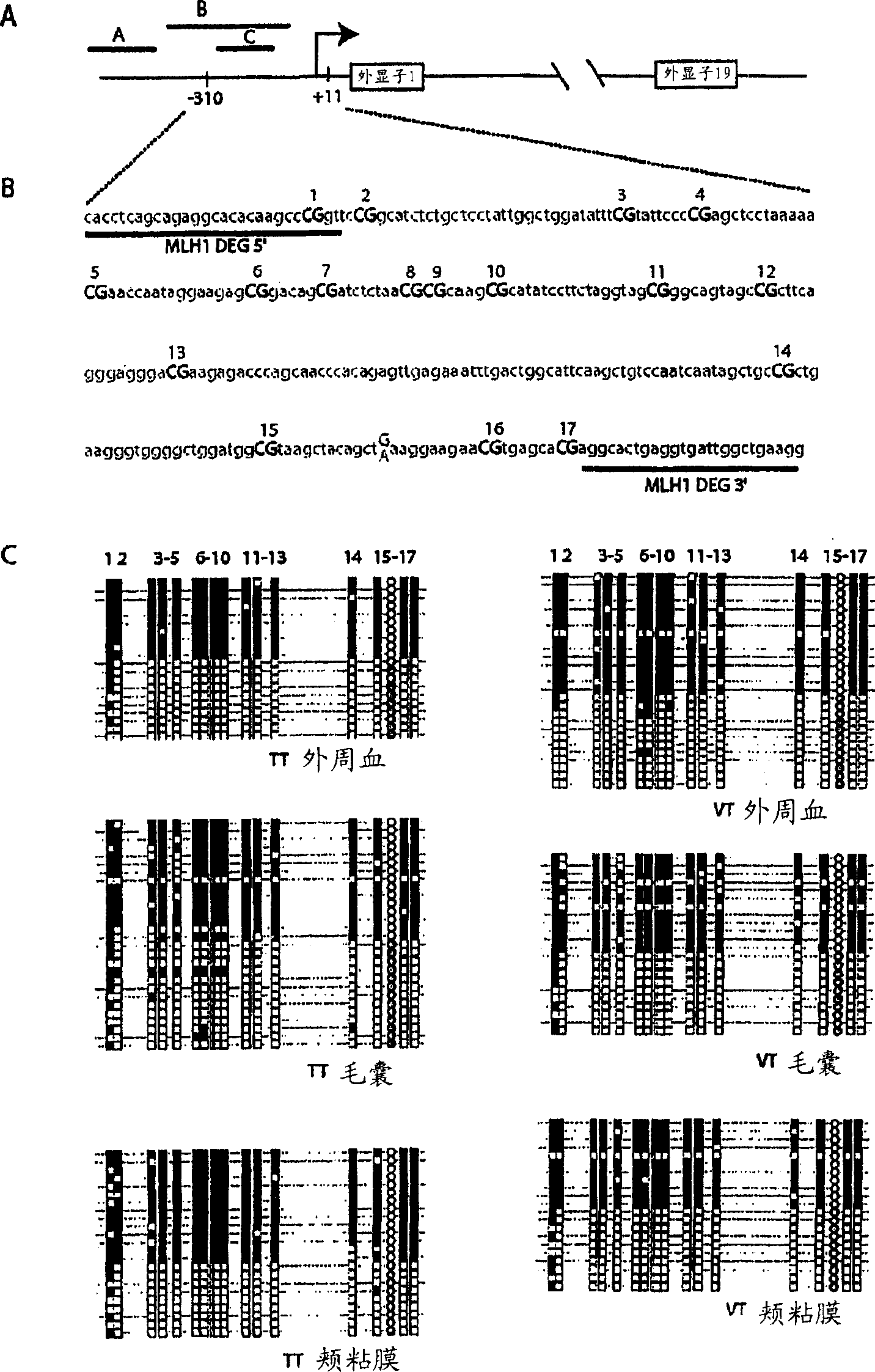Assessment of disease risk by quantitative determination of epimutation in normal tissues
A disease risk, normal technology, used in the field of assays to assess disease risk, can solve problems such as no family pattern, and poor separation of germline and soma
- Summary
- Abstract
- Description
- Claims
- Application Information
AI Technical Summary
Problems solved by technology
Method used
Image
Examples
Embodiment 2
[0047] Materials and methods
[0048] Patient samples
[0049] In this study, 188 individuals with a personal history of cancer from St Vincent's Hospital (Sydney, NSW, Australia) and another 50 individuals from Victorian Clinical Genetics Service (Melbourne, VIC, Australia) were included. Of these individuals, 65 were mutation-negative after screening for harmful germline changes in hMSH2, hMLH1, or APC, while 18 had proliferative polyposis, and the remaining 155 had only a personal history of colorectal cancer.
[0050]The standard phenol chloroform method (Sambrook et al. 1989) was used to extract DNA from peripheral blood, histologically normal colonic mucosa, buccal membrane smears, hair follicles and sperm. In order to rule out the possibility of somatic cells contaminated in sperm, semen was sorted on FACSVantageDiVa (Becton Dickinson, Lexington, KY, USA) before DNA extraction. After staining with propidium iodide according to the described method (Schoell et al. 1999), spe...
PUM
 Login to View More
Login to View More Abstract
Description
Claims
Application Information
 Login to View More
Login to View More - R&D
- Intellectual Property
- Life Sciences
- Materials
- Tech Scout
- Unparalleled Data Quality
- Higher Quality Content
- 60% Fewer Hallucinations
Browse by: Latest US Patents, China's latest patents, Technical Efficacy Thesaurus, Application Domain, Technology Topic, Popular Technical Reports.
© 2025 PatSnap. All rights reserved.Legal|Privacy policy|Modern Slavery Act Transparency Statement|Sitemap|About US| Contact US: help@patsnap.com



